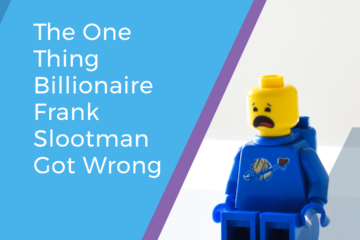
This article was originally published on Inc.
It’s a challenging time in the world–and in the world of SaaS. Right now 2022, the Bessemer Venture Partners (BVP) NASDAQ Emerging Cloud Index is down nearly 40% from its peak. Since SaaS companies grew a lot during that time frame, this means multiples are down even more.
While the initial impact has been on public valuations, the ripple effects are moving at warp speed. Investors in public stocks are also, in some cases, “limited partners” in venture capital funds. They are telling the VCs they invest in to slow down. The same VCs are looking at portfolio companies that have been or are about to be “marked down” significantly in valuation. And they are also staring at companies that need to raise money soon, with no path in sight.
The fact is that the glut of capital in the last few years has resulted in too many companies in every market. You can feel this every day when you look at the number of prospecting emails you get from seemingly-similar businesses.
As legendary Benchmark Venture Capital investor Bill Gurley tweeted recently, the challenge for many entrepreneurs is that they haven’t been through a cycle like this before. The bad news is that not every company will make it through this downturn. I say that with sadness because I know a ton of people are working very hard on their companies. The good news is that those that do will be many times stronger.
So, what do you need to focus on to survive and thrive?
Now, if you’re old like me, a crash is nothing new. I missed the 1929 Wall Street crash, but I’ve lived through many of the big ones since then–the dot-com crash, 9/11, the GFC (Global Financial Crisis), and the more recent Covid-19 crash.
The one thing I’ve learned after witnessing so many downturns is that companies with durable growth will not only surf these wild waves but will also be better prepared for future success when the wave dies down.
Here’s what every functional leader should be thinking about as we try to get through these turbulent times:
Chief Financial Officers Should Consider Moving from an Annual Budget to Monthly Forecasting
CFOs are important in boom and bust times, but they become critical during times of uncertainty. With prices (for labor, from your vendors, and to your customers) continuing to rise, demand likely slowing, and the cost of capital going up, you will have to plan for multiple future scenarios.
At the beginning of the Covid crisis, most finance teams started building multiple financial frameworks for recovery–the famously-shaped “V,” “U,” and “L” recovery models.
While we might need to tap the Greek alphabet to predict what happens next, it’s clear that CFOs need to build a forecasting framework that takes into account:
- Varying alternatives on salary growth from continued double-digit levels to a reversion to the mean.
- Varying ability to increase prices for clients as demand slows.
- Varying impact on sales and customer retention from issues in your client base or industry.
The biggest insight I’ve had during these periods is that it’s important to get companies out of the mindset of “annual plans” and into more agile monthly forecasting. No budget or headcount is committed–everything is up for discussion at any moment.
Chief Customer Officers Should Consider Ways To Efficiently Scale
If the CFO is the star of a downturn, CCOs are certainly nothing short of co-stars. This is true for five key reasons:
- New sales will decline rapidly as fear slows new decisions, so existing customers become even more important.
- Your existing customers need your help since they likely are struggling too.
- Your existing customers will notice who is there for them, which will affect who they double down with during a recovery.
- Your existing customers will scrutinize outcomes and experiences, which means you have to make sure you stay above the “cut line.”
- Your existing customers will look to consolidate spend (more on this in the next section).
While all of that is very empowering, if you’re like most companies, be prepared for an email from your CFO about a “hiring freeze.” Nearly every SaaS company is revising its growth plans, given the likelihood of a slowing economy. So just as in the early days of Covid, you will be asked to “do more with less.”
The only solution is to consider more scalable ways to reach your customers, including:
- Automation through digital touches.
- Pooled approaches to Customer Success.
- Peer-to-peer communities to allow clients to help each other.
- In-app communications to drive Customer Success from inside your product.
- Greater cross-functional alignment toward retention and expansion.
Your job has never been more important, so make sure your team is ready.
Chief Revenue Officers Should Consider Reinvesting in Account Management
During times of uncertainty, human beings become creatures of habit. They often keep doing what they have been doing but slow down on trying anything new. We all saw this during the early days of Covid, where new logo sales ground to a halt for most businesses.
While we don’t expect the same magnitude of effect here, most SaaS companies will see some extension of new purchasing cycles. In parallel, the opportunity in your existing client base could grow. Companies will want fewer vendors, so if you have a product suite, there is a chance to increase your “share of wallet.” And a continued-inflationary environment gives vendors more license to extend price increases.
CROs should get ready to spend more time with their existing Account Management teams. In particular, best-in-class companies will institute more formalized and integrated processes between Account Planning in Sales and Success Planning in Customer Success. This will include structured identification of client objectives and ROI, defined plans for delivery, and documented maps of key contacts at the customer.
Chief Marketing Officers Should Consider Investing in Customer Marketing
While marketing leaders often have a broad remit, inevitably the top metric in boom times is “new logo pipeline.” This makes sense in environments where growth is valued above all else.
Most Marketing teams don’t have the same organizational muscle to target their existing clients (Customer Marketing). These often require a completely different set of strategies. First, messaging must be tweaked to be aligned to customer challenges and opportunities. Second, the cadence needs to be customized to individual customer journeys–not just the campaign of the month. Finally, Marketing teams need to collaborate closely with Customer Success teams on these programs to align with the health, adoption, and experience of existing customers.
Chief Product Officers Should Consider Leaning Into Product-Led Growth
One of the biggest mistakes companies can make during a downturn is to starve R&D. Businesses that do this sell their futures in exchange for the present.
One way to balance things is to consider shifting new logo Sales and Marketing dollars into R&D, specifically toward Product-led Growth (PLG) strategies. PLG is not, as some think, a binary “on/off” situation. Instead, PLG tactics can be adapted to companies across the various stages of product maturity. For instance, you could invest in self-service and guided demos to reduce the cost of new sales or use in-app engagement to reduce the cost of onboarding new users. The point is that no matter which stage of growth or product maturity you’re at, your product can be a frictionless source of pipeline, growth, and revenue.
R&D investments are often the most efficient Sales and Marketing investments around. Use the new world of efficiency to double down on this.
Chief People Officers Should Consider Increasing Transparency
The Great Resignation has kept Chief People Officers and their teams pretty busy in recent times. As if that weren’t enough, now their employees are stressing over skyrocketing inflation, diminishing equity values, and overall economic uncertainty.
As has been true the last several years, Chief People Officers will need to continue to hone their communication skills (in partnership with the CFO and CEO) to help teammates understand the new value proposition for working at the company. They’ll need to help educate their workforce as to why last year’s labor market may not last and what the risks are of this new employment climate. It’s also important to share future scenarios of the company and how and why exit/next phase timelines have moved. The worst thing to do in this situation is say nothing and pretend that it’s “business as usual.”
Chief Executive Officers Should Consider Getting Ready To Emerge Stronger
One thing is certain– companies that are resilient in terms of balance sheets, cash flows, customers, and culture are the ones that become unstoppable coming out of downturns.
The big leaps in growth for many of the biggest names in SaaS today were a result of smart management through the Great Financial Crisis of 2008-2010.
For CEOs, this means that if your company is financially sound, you are well placed to:
- Win the “war for talent” again.
- Buy competitors and adjacent businesses at attractive multiples.
- Access capital once the markets open up again.
- Consolidate market share, as clients opt to work with fewer and larger vendors.
The next few years will be rough, and the last few years haven’t been easy either. But if you look back at past crises, you realize that the companies we all admire today were forged during the downturns of the past. Here’s to all of us getting through it!



